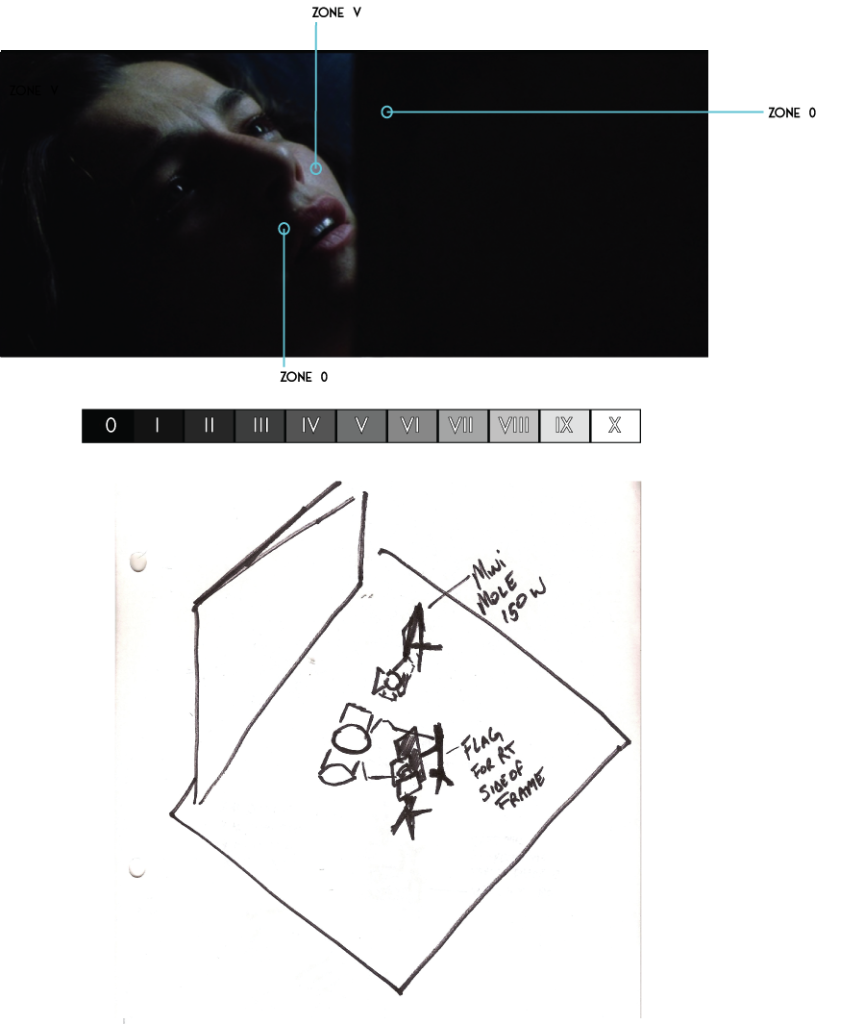
It allows to keep PV going, with more focus towards AI, but keeping be one of the few truly independent places.
-
If you always wanted to know how they made lighting in specific scene, it is proper topic.
First, look at this resource - http://thetwopointeight.tumblr.com/
It is blog describing lighting (mostly portraits like).
Second. You can search Amazon for lighting books. I need some time to find, but I am sure that I read some books describing lighting of famous film scenes . -
thank you Vitaliy,it'very useful indeed!
-
I'm currently reading "Painting with Light" by John Alton, a cinematographer famous for pioneering film noir lighting aesthetics. There is a lot of outdated material regarding production equipment, but the chapters on lighting technique are indispensable. Some consider this the definitive book on lighting:
-
A quick and useful way to see how a scene was done is to zoom way in on their eyes. In the fish-eye lens reflection in the eyeball, you can see all the lights that are hitting the front of the face. They tend to be just white shapes though. Gives you a good idea of how big /what direction the source came from, but you'll have to conjecture a bit about how powerful the units were.
Another thing you can do is this: Looking at the light falling on the subjects skin, or even better light that hits multiple subjects, you can get some idea about how close and thus how big the light hitting them was. You already know the inverse square law, but how it works empirically is that the farther away the light is from the subject, the more even the intensity falloff wil be. If you have rapid falloff, you've got a small source relatively close by. If it's even over subjects distributed through a large space, then you've got something huge very far away. Thats why everyone always puts a big HMI like an 18k up in a condor bucket two blocks away- it loses a lot of intensity over that distance, but the difference in brightness between separate objects will be very small, similar to the light coming from that big bright white thing in the sky. Tom Airboxlights.com -
I highly recommend checking out Art Adams "Stunning Good Looks". Incredibly informative, especially his articles about soft-ligthing. Check it out here:
Howdy, Stranger!
It looks like you're new here. If you want to get involved, click one of these buttons!
Categories
- Topics List23,992
- Blog5,725
- General and News1,354
- Hacks and Patches1,153
- ↳ Top Settings33
- ↳ Beginners256
- ↳ Archives402
- ↳ Hacks News and Development56
- Cameras2,367
- ↳ Panasonic995
- ↳ Canon118
- ↳ Sony156
- ↳ Nikon96
- ↳ Pentax and Samsung70
- ↳ Olympus and Fujifilm101
- ↳ Compacts and Camcorders300
- ↳ Smartphones for video97
- ↳ Pro Video Cameras191
- ↳ BlackMagic and other raw cameras116
- Skill1,960
- ↳ Business and distribution66
- ↳ Preparation, scripts and legal38
- ↳ Art149
- ↳ Import, Convert, Exporting291
- ↳ Editors191
- ↳ Effects and stunts115
- ↳ Color grading197
- ↳ Sound and Music280
- ↳ Lighting96
- ↳ Software and storage tips266
- Gear5,420
- ↳ Filters, Adapters, Matte boxes344
- ↳ Lenses1,582
- ↳ Follow focus and gears93
- ↳ Sound499
- ↳ Lighting gear314
- ↳ Camera movement230
- ↳ Gimbals and copters302
- ↳ Rigs and related stuff273
- ↳ Power solutions83
- ↳ Monitors and viewfinders340
- ↳ Tripods and fluid heads139
- ↳ Storage286
- ↳ Computers and studio gear560
- ↳ VR and 3D248
- Showcase1,859
- Marketplace2,834
- Offtopic1,320






